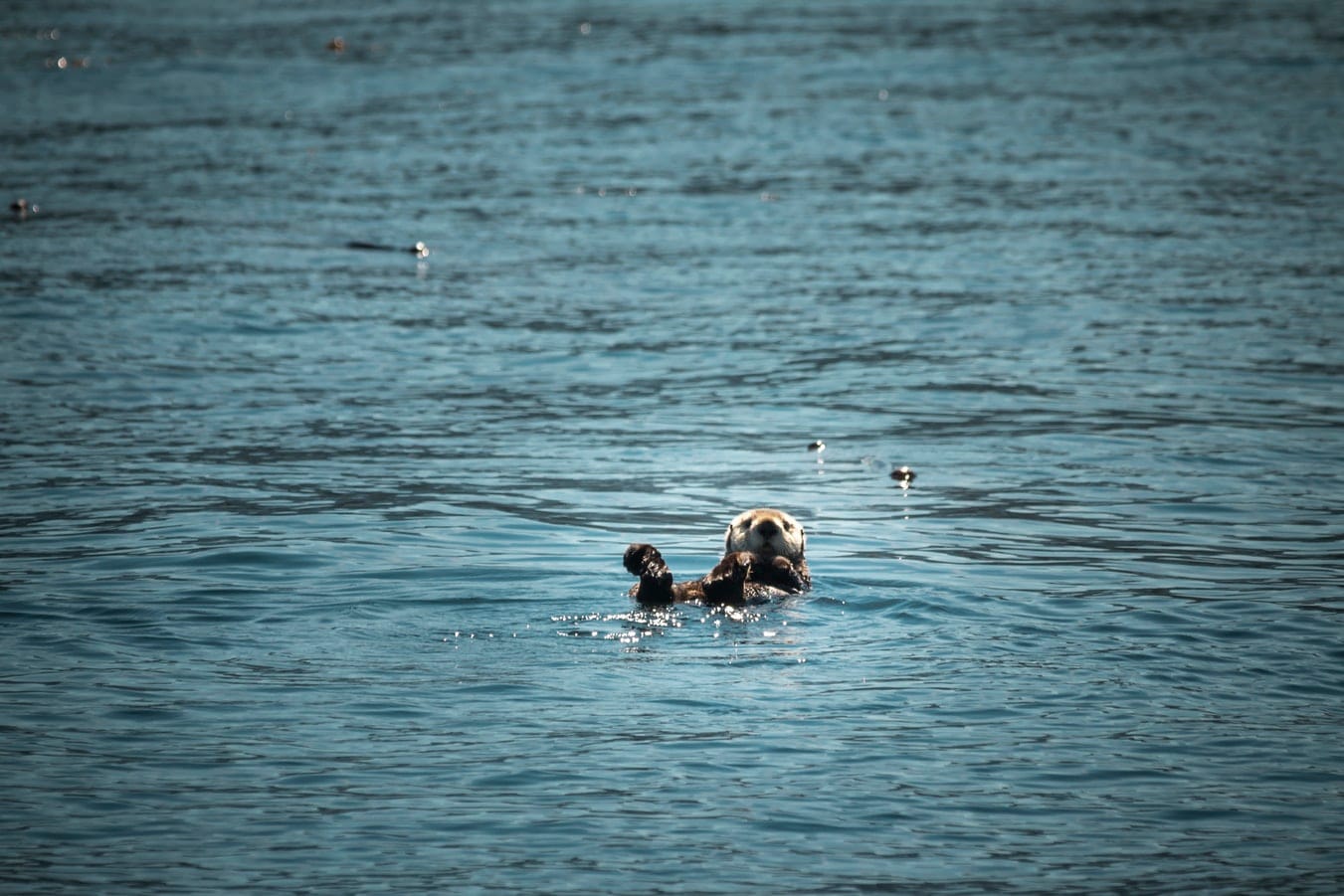Otters Making a Welcome Return to Texas Waterways

The return of otters and beavers to Texas rivers is a very good thing for the environment.
NOTE: this article was published to SAExpressNews.com on February 15, 2018, written by Shanon Tompkins.
HOUSTON — Don Greene was sick and weak, dying of pancreatic cancer.
But that late-winter morning four years ago, my long-time friend fairly vibrated and glowed with excitement, wonder and just plain joy.“You’re not going to believe what we’ve seen on the bayou,” gushed Greene.
t was understood he spoke of Houston’s Buffalo Bayou, a stream whose natural history Greene knew as well and as intimately as anyone. He’d spent hundreds of days over more than four decades paddling its course, working ceaselessly and with great success to protect the city’s signature waterway and transform it from a fetid pseudo-sewer into the healthy, diverse, appreciated aquatic ecosystem it long ago had been.
“Otters! Buffalo Bayou has otters, again,” Greene said. “Never seen evidence of them until this past year. We’ve been documenting their tracks on the sandbars. We even have game-camera photos of one! This is so cool! Most people have no idea river otters exist in Texas, much less in Buffalo Bayou.
“They are such incredible animals,” he said, his voice and spirit obviously buoyed by the discovery. “Just knowing otters are there makes me feel so good. It says the bayou’s health has improved.
I thought of that conversation just a few weeks ago while transfixed on the edge of a freshwater marsh in Jefferson County, watching an otter as it fished for breakfast — a rare experience in Texas, but happily, becoming less so.
The best at what they do
In the water — and that’s where they spend most of their time — otters are a combination of unequalled physical grace and athleticism, perpetual animation and an aura of sheer exuberance. They appear to revel in simply existing.
“Otters are the most endlessly energetic, animated animals,” said Jonah Evans, mammalogist for Texas Parks and Wildlife Department with a deep background in study of river otters. “They seem to just enjoy life. They are an interesting critter to watch. That’s one of the reasons they are so fascinating to people.”
But otters are not simply benign symbols living in, but somehow separate from, their environment. They are vital parts of it. Like the other members of their Mustelidae family that includes mink, wolverines and badgers, otters are efficient predators.
“Otters are incredibly good at what they do,” Evans said. And what they do is hunt, almost exclusively in water. Otters are opportunistic carnivores, feeding on a variety of aquatic (and some terrestrial) creatures.
Often, that’s fish, which these skilled swimmers with their webbed feet are so adept at catching that they sometimes eat only the most nutritious parts such as the brain, leaving the rest on the shore.
But their diets also include a rich variety of other aquatic life. Crawfish are a preferred meal, and when the crustaceans are abundant, as they can become in Texas rivers and streams during spring and summer, “they eat them like potato chips,” Evans said.
Witnessing an otter fish a pool in a creek or the edge of a bayou, moving with a fluidity and speed that makes a seal look uncoordinated, is a wonder to see. So is the experience of watching a family group of otters — usually a female with her kits — scramble along a bank, poking under rocks and logs, wrestling with each other, sliding down a muddy bank only to race back and do it time after time, or hearing otters whistle and chirp and bark to each other as they hunt.
Otters tend to prefer isolated areas along waterways, and they are most active early and late in the day. Unless people spend time along rivers, bayous, streams, marshes or swamps, they are not likely to see one of these 10- to 15-pound creatures.
The odds of encountering a Texas river otter appear to have steadily and significantly improved over the past 40 years or so. The aquatic mammals seem to have repopulated much of their original native range in the state, especially over the past couple of decades. They had a long way to go.
Evans, who studied otters for his master’s degree, spent three months kayaking a Missouri river with a thriving otter population, collecting otter scat for a study into the animal’s food habits.
“I was on the water six days a week for three months. I saw otters twice,” Evans said.
In search of a home
Otters’ original range in Texas included all of the river drainages in the eastern half of the state, including as far south as the lower Rio Grande. There are historical accounts of otters along the Pease and Canadian Rivers in the Texas Panhandle.
That range shrivelled in the late 19th century and most of the 20th century, with habitat loss, degraded water quality and unregulated hunting and trapping blamed. By the 1970s, river otters’ range in Texas was limited to the watersheds in the far eastern quarter of the state and coastal wetlands from the Louisiana border to the mid-coast.
Over the past two decades, though, otters have been documented expanding across the eastern half of the state, showing up as far inland as the Llano River in the Hill Country and along streams feeding the Red River upstream from Wichita Falls. Also, Evans said, otters have been documented along the lower Rio Grande.
Over the past decade, I’ve had at least two-dozen encounters with otters, all of them in coastal marshes, timbered streams and swamps.
Each has been a welcomed and memorable event. Otters, it seems, have that effect on people. And for some of us, that’s a wonderful blessing.
